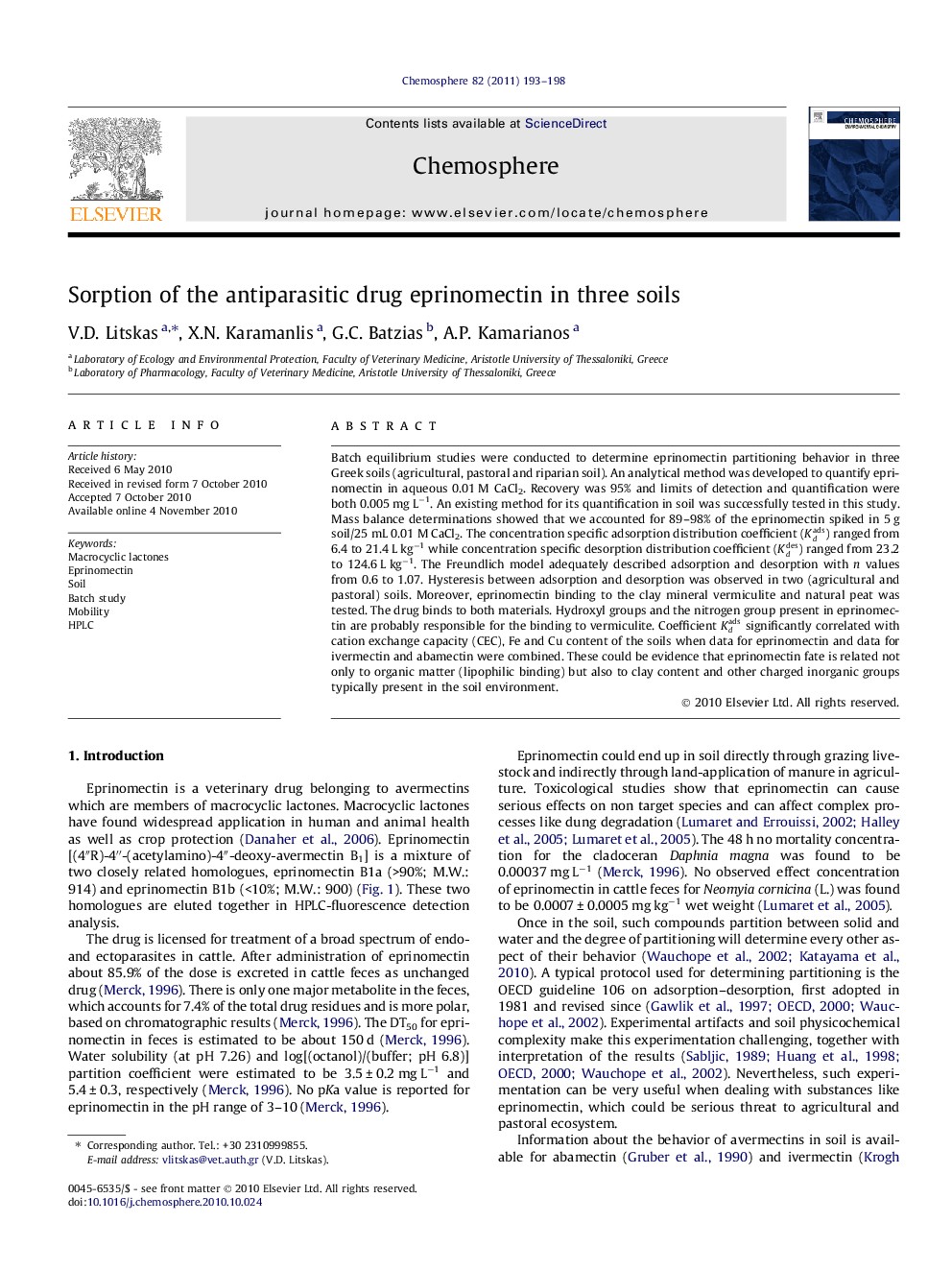| Article ID | Journal | Published Year | Pages | File Type |
|---|---|---|---|---|
| 4411146 | Chemosphere | 2011 | 6 Pages |
Batch equilibrium studies were conducted to determine eprinomectin partitioning behavior in three Greek soils (agricultural, pastoral and riparian soil). An analytical method was developed to quantify eprinomectin in aqueous 0.01 M CaCl2. Recovery was 95% and limits of detection and quantification were both 0.005 mg L−1. An existing method for its quantification in soil was successfully tested in this study. Mass balance determinations showed that we accounted for 89–98% of the eprinomectin spiked in 5 g soil/25 mL 0.01 M CaCl2. The concentration specific adsorption distribution coefficient (Kdads) ranged from 6.4 to 21.4 L kg−1 while concentration specific desorption distribution coefficient (Kddes) ranged from 23.2 to 124.6 L kg−1. The Freundlich model adequately described adsorption and desorption with n values from 0.6 to 1.07. Hysteresis between adsorption and desorption was observed in two (agricultural and pastoral) soils. Moreover, eprinomectin binding to the clay mineral vermiculite and natural peat was tested. The drug binds to both materials. Hydroxyl groups and the nitrogen group present in eprinomectin are probably responsible for the binding to vermiculite. Coefficient Kdads significantly correlated with cation exchange capacity (CEC), Fe and Cu content of the soils when data for eprinomectin and data for ivermectin and abamectin were combined. These could be evidence that eprinomectin fate is related not only to organic matter (lipophilic binding) but also to clay content and other charged inorganic groups typically present in the soil environment.
